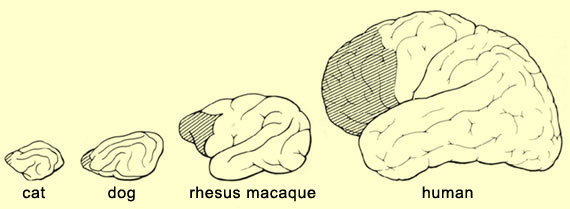Habits and Addictions

Until very recently, neuroscientists and psychologists believed that habits were hidden in the inflexible “subconscious,” but a new study from MIT has found that a small region of the brain’s prefrontal cortex–where most thought and planning occurs–is responsible for moment-by-moment control of which habits are switched on at a given time. This means that on some level, our brains are definitely aware of our habits, and, no matter how persevering the habit is, our prefrontal cortex can also shut them off.
Habits are learned behaviors wired so deeply in our brain that we perform them without thinking. Many go unnoticed because people rarely engage in self-analysis when undertaking routine tasks–where habits often form. In fact, as behaviors are repeated in a consistent context, the behavior becomes more automatic. Habits are a reflection of how we choose to spend time interacting with the world, guided by our short and long term goals, some of which we no longer remember.
The researchers at MIT formed habits in mice running through a maze over the course of four weeks through repetition and aural cues. Once they had shown that the habit was fully ingrained, the researchers attempted to break it by interfering with a part of the prefrontal cortex known as the infralimbic (IL) cortex. Using a technique that allows researchers to inhibit specific cells with light, the researchers turned off IL cortex activity as the rats approached the point in the maze where they had to decide which way to turn. The rats’ brains turned from a reflexive, habitual mode to a more cognitive and engaged mode, focused on a goal. But once the rats had broken their old habit, they formed a new one, which the researchers were then able to break again. To their surprise, the rats immediately regained their original habit, which suggests that habits are never really forgotten, just replaced with new ones.

The purpose of a habit is that our brain is freed up to think about other things while we perform everyday tasks, though this leaves us vulnerable to forming negative habits, such as biting our nails when waiting in line. When we enjoy certain stimulations, dopamine is released into the brain, relieving stress, improving mood, and providing a sense of reward. But as we repeat the behavior, our tolerance builds, requiring more stimulation to trigger the dopamine receptors. Sometimes we keep using just to feel normal (dependence), but if the consequences of our behavior become significant and harmful, and the behavior cannot be controlled, our habit is then considered a behavioral addiction, or a process addiction; if it involves illegal or misused substances, it is considered a drug addiction. Those who form “drug habits” often struggle with them for the rest of their lives due to the lasting effects of dependence and dopamine withdrawal on the brain. Our old habits are always lurking in the back of our mind; 50 to 90 percent of drug addicts will relapse from their current treatment.

The key to eliminating bad habits is to become aware of the behavior (through friends, family, or whatever support group available), identify the factors which trigger and encourage its persistence, and remove them however possible. Like describing the feeling of a dream, the context of a habit is important, too–look for indicators and symbols in your everyday life that may stand for something more significant and purposefully alter their meaning. Cutting out repetitive behavior in general is also a way to curb the formation of habits. (Variety really is the spice of life!) In light of the study, it may be possible to shut off the IL at will through neurosurgery or biopsychological treatments in the future. But it seems that if we can’t flip the switch ourselves, we must seek new, positive behaviors that give us a brain-pleasing boost, such as exercising creativity or problem-solving, effectively replacing our old, bad habits.

